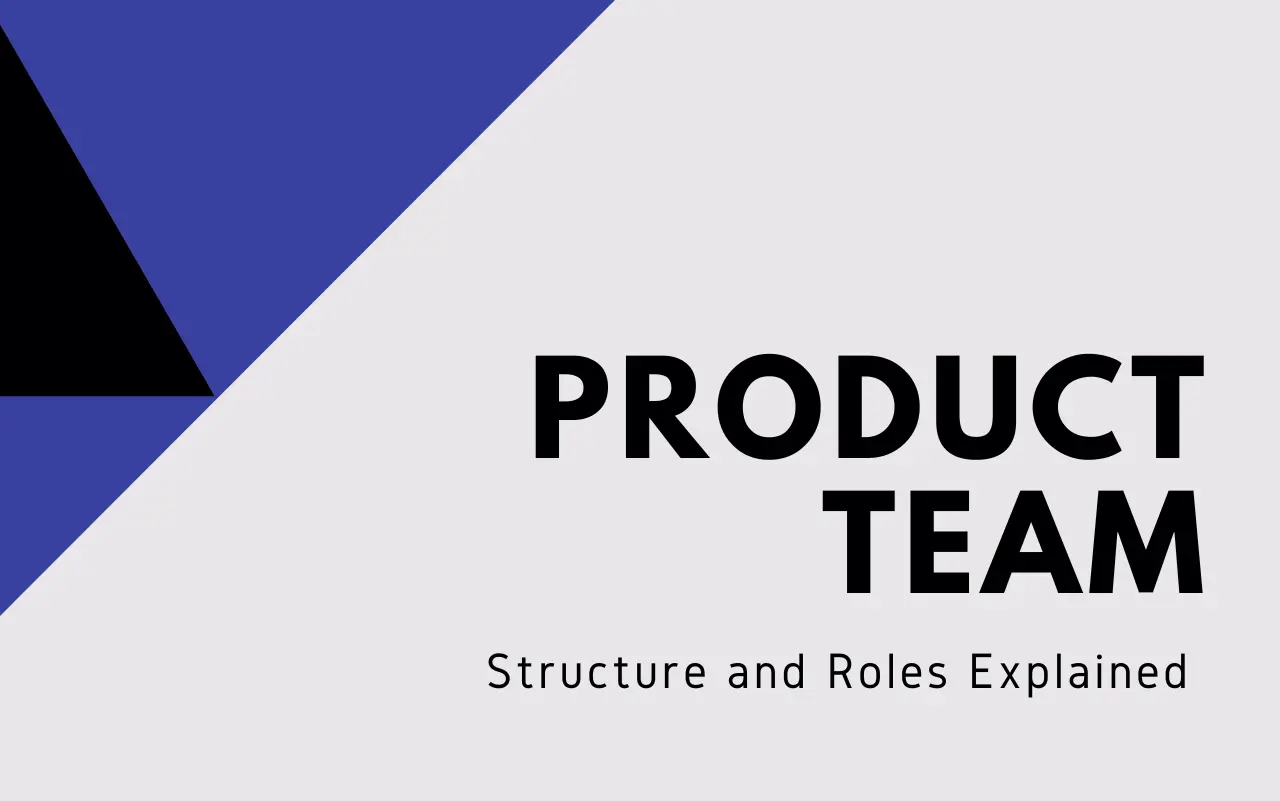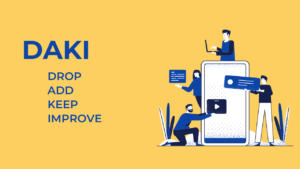Table of Contents
Product Team Structure – Overview & Roles in 2022
Every great product has a great product team structure behind it. Teams in charge of product development are in charge of researching consumer demands, developing new products, and marketing them. Along with deciding what to build, they must also convey the product’s advantages and evaluate its performance. Both are important tasks for any business. Delivering value to customers and sustaining the business are the ultimate goals.
However, many people still view product management teams in a quite limited sense – as a team of engineers and designers collaborating to create the product.

So, what makes a good product team structure? It comprises the right people with the right roles and follows the right process. But how do we create that? And what are product management team roles? Let’s dive in.
Product Team Structure – An Overview!
Every organization must have a product team structure. It reflects how you want to run your company, what values you hold, and how you prefer to work with others. The structure can be anything from one person leading all aspects of the product to several people working together in teams.
Product teams should be “focused on outcomes instead of outputs,” according to Marty Cagan, author of Inspired: How to Create The Tech Products Customers Love.
The product management team develops and manages the company’s products. This includes defining its scope, writing requirements, designing, testing, deploying and supporting it through its lifecycle.
Product Roles Explained: Product Team Structure
Product teams have several different roles, each with its own responsibilities. These roles include:
1. Product Manager
Product managers are responsible for the vision and roadmap of a product, as well as managing the product team. They work with various stakeholders to set goals, determine what features will be included in the next release, and prioritize tasks. They also manage the product backlog, which is a list of all tasks that need to be completed before releasing a new version of an app or website.
2. Application Developer
Application developers are responsible for creating applications from concept to completion. They must be able to design software that performs well under load while remaining compatible with diverse hardware configurations.
3. Product Designer
Product designers are responsible for creating and designing the product. They come up with ideas, mockups, sketches, and wireframes. They work closely with engineers to ensure the concept works in practice.
4. QA Tester
QA testers are responsible for testing the product for bugs, performance issues, and other problems that may arise during development. They also test new features to ensure that they’re working as expected.
5. Product Marketing
Product marketing is responsible for promoting your product to customers. This can include advertising campaigns, blog posts, social media posts, email newsletters, and more.
Product Management Team Roles in Agile Product Management
Agile management is an iterative process where the product team works in small iterations or sprints to deliver working software.
The Agile Product development Team Structure is divided into four roles:
- Product Owner: This role is responsible for maintaining the product backlog and ensuring that the team delivers valuable and usable products. The Product Owner works closely with other roles in the group, including the Scrum Master and Developers.
- Scrum Master: The Scrum Master is responsible for facilitating meetings, removing impediments, and ensuring that sprint deliveries are successful. They also lead ceremonies such as planning, review, retrospective, etc.
- Developers: Developers are responsible for writing code according to user stories from the product backlog. They work closely with Scrum Masters and Product Owners to ensure that they understand what needs to be built and how it should be built.
- Testers: Testers break down stories into testable chunks that developers can execute during a sprint.
How to Build a Product Team Structure?
It is not just one person who makes a product. The product development team comprises all the people working on the product. They are responsible for ensuring that the product is designed and developed properly, from conception to end use.
Here are some tips for building a product team structure:
Organize Around ‘Jobs to be Done.’
The way we organize teams needs to change. Most companies collect around products because they’re easier to manage and understand from a financial perspective. But products aren’t what customers buy; they’re tools that help customers do something they need.
You can begin organizing your teams around those tasks by focusing on what your customers need rather than what you sell. For example, let’s say you have an effect that helps people find new restaurants in their area. Instead of organizing your team around the product, you could manage it around the job your customer is trying to accomplish: finding new restaurants in their area.
Create a ‘Communication Protocol’ For Product Teams
There should be one main communication channel for all product teams within an organization. So everyone has access to all the relevant information from different departments. This ensures everyone on the team stays informed about what’s happening across departments and can participate in discussions when needed without asking for permission first.
Keep The Size Of The Product Team Small
You only need a few people for a successful product development process. Depending on the type of product you want to develop, and how much time you have to do so, you may need just one or two people involved in your product development process. If possible, try not to exceed five people per team (some companies start with even fewer people).
Use Lightweight Tools For Collaboration
Product development is collaborative; the more people involved, the better. Everyone on your team must have access to all the information they need. So you should use lightweight tools that allow you to collaborate and share files easily with your team members.
Give Your Developers And Designers The Right Tools
If you want your developers and designers to be productive while working on your product, they need access to the right tools—both hardware and software—to do their work efficiently. If you’re using something like Agile Scrum or Kanban, then you’ll need to provide them with some way to track their progress against their tasks. You might also want them to see when other people are working on something related so they can collaborate effectively.
Conclusion
Whether you’re building a product team from scratch or looking to restructure your existing unit, clearly defined roles and responsibilities can help you make the best product possible. Ultimately, how you structure your team will come down to what works best for your company, project, and resources.
Without a proper structure for the teams and their workflow, delivering the project on time is always a problem. The work has to be done more effectively. That’s why the Agile Product Roadmap & Story Mapping tool is made available over the web, effectively dealing with your requirements.












